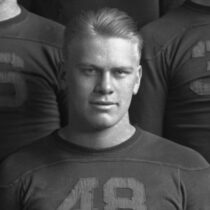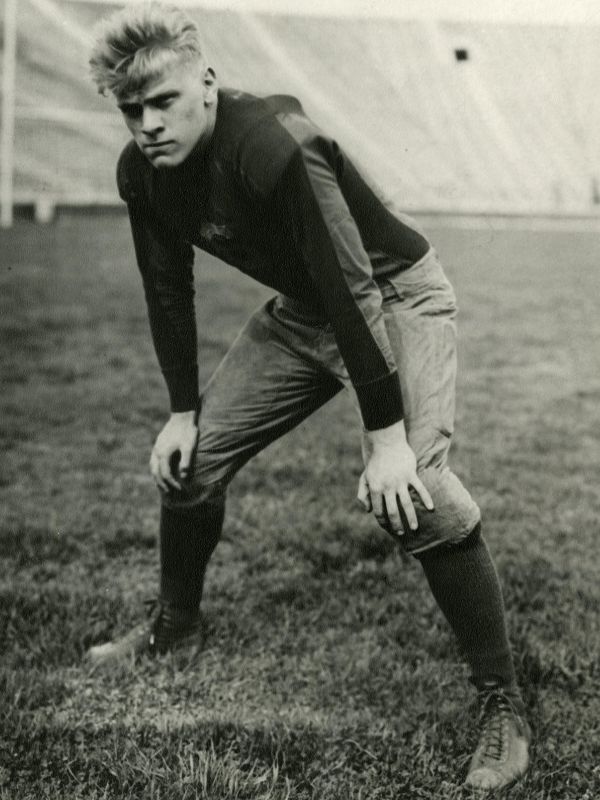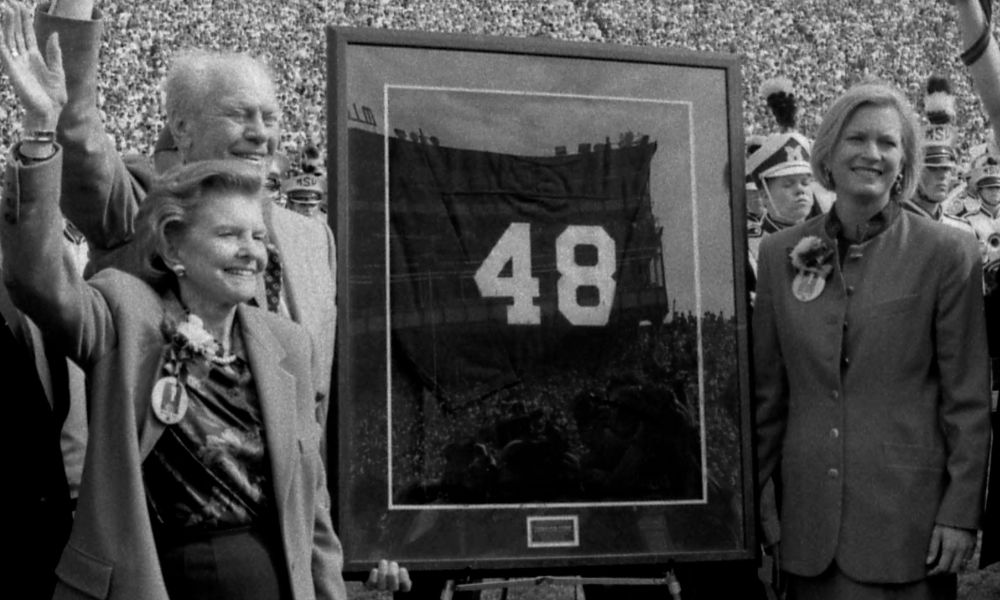Magazine

Ford on the Field
This year marks the 50th anniversary of Gerald R. Ford’s presidency. His accomplishments on a national scale make it easy to forget he was also an exceptional U-M football player.
By jay winkler
Among all the retired numbers in all of college athletics, Michigan football’s #48 is unique: it is the only one retired for a person who later became a U.S. president.
Gerald “Jerry” Ford began making a name for himself on the gridiron as a high school student in Grand Rapids, Michigan. Before his senior season in 1930, the Grand Rapids Press noted that Ford’s “work as a defensive fullback on occasions last year was extraordinary.” He was featured, smartly dressed, in an ad that touted “Popular Football Team Captains Wearing Young Men’s Clothes from Houseman and Jones.” (Apparently the NCAA was not yet enforcing rules about athlete endorsements.) When the Detroit Free Press editors selected him for its All-State team, they called him “the ideal center . . . and all over the field on defense.”
When Ford came to Michigan in 1931, freshmen could not play varsity football. Nevertheless, The Michigan Daily kept a close eye on him in practice. The paper reported that Ford “showed ability in backing up the line in the Michigan system of defense” when he started for the freshman “Yearlings” in their annual contest against a team of students from the Physical Education department. After spring practice concluded, Ford was awarded the Chicago Alumni Trophy, given to the “freshman player who had shown the greatest development.”
Despite the first-year accolades, Ford spent his sophomore and junior seasons stuck on the bench behind All-American Chuck Bernard. Ford appeared on the field sporadically but competently as a backup, helping Michigan win the 1932 and 1933 National Championships.

Ford on the football field in 1934, the same year his teammates voted him Most Valuable Player.
Meanwhile, off the field he was a model student: he joined the Sphinx, the junior men’s honors society; he sat on club boards; and the Athletic Department was proud to report his good academic standing to the Daily.
Ford was poised to be a breakout football star his senior year. Though Michigan football experienced a significant performance downturn and limped to 1–7, Ford was the team’s star. The Michigan Daily regularly featured his photo, with captions such as “Ford plays stellar game” and “Ford proves dependable.” Before his final game, the paper noted his toughness for starting a full season “despite enough injuries to keep several less hardy men confined to bed.” As a send-off, his teammates voted him 1934’s Most Valuable Player.
Ford played in the East-West Shrine all-star game on New Year’s Day in 1935. Both the Green Bay Packers and Detroit Lions offered him professional football contracts, but he turned them down, opting to become an assistant coach at Yale. His last game of organized football was a college All-Stars vs. Chicago Bears exhibition in August of 1935. While initially denied admission due to his football coaching duties, by 1938 he entered Yale Law School and was promoted to junior varsity head coach.
While Michigan did not retire Gerald Ford’s number until he was out of office, it wasn’t just a courtesy to the president: as materials at the Bentley show, Ford earned every tackle and took every hit.

Gerald Ford’s initial football number retirement ceremony in 1994, from the Robert Kalmbach photographs.
